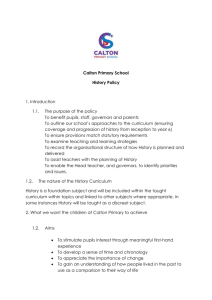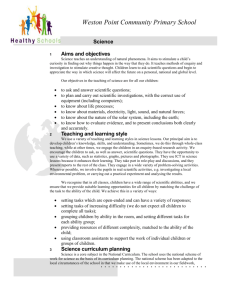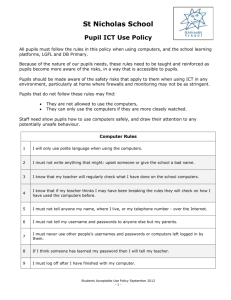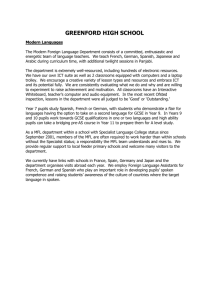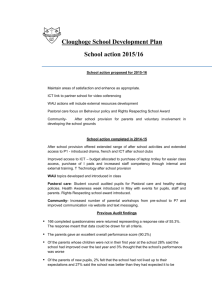Edtech Lesson I
advertisement
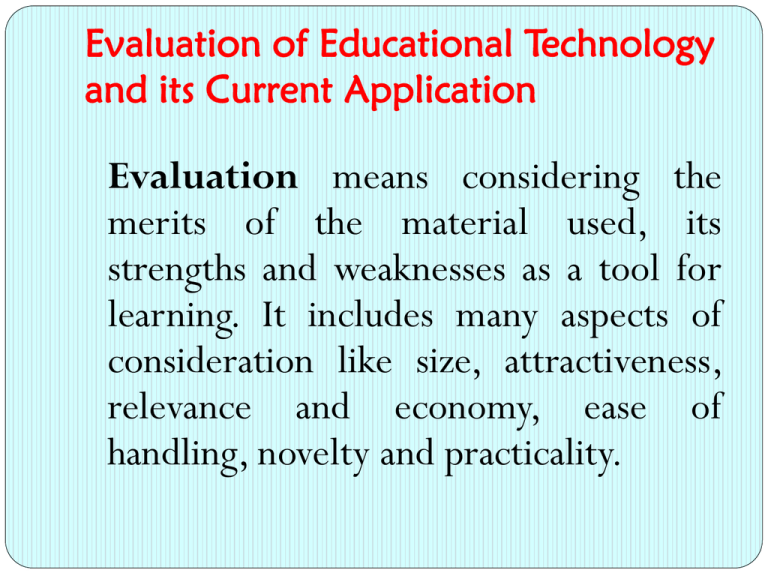
Evaluation of Educational Technology and its Current Application Evaluation means considering the merits of the material used, its strengths and weaknesses as a tool for learning. It includes many aspects of consideration like size, attractiveness, relevance and economy, ease of handling, novelty and practicality. Technology is the science of the application of knowledge to practical purposes in a particular field. It means the totality of the means employed by a group of people to provide itself with the objects of material culture. Educational Technology is the development, application and evaluation of systems, techniques and aids to improve the process of human learning (Council for Educational Technology for the United Kingdom 1997).It is a systematic way of designing, implementing and evaluating the total learning and teaching process in terms of specific objectives based on research on human learning and communication and employing a combination of human and non-human resources to bring about more effective instruction (cited by Lucido, 1997) Information and Communications Technology (ICT) refers to the use of electronic communication system which has made the sharing of information faster and more effective. ICT tools refer to the computer and its various applications like word processing, PowerPoint, excel, publisher, particularly the Internet and the E-mail Classifications of Educational Technology Material Technology 1.Traditional or Low-Tech Instructional Materials are the indigenous materials usually real objects or those that are made of paper and cardboards. Pictures or photographs, illustrations, drawings, cartoons, posters, graphs, charts, flash cards and maps done n paper are examples of these 2.High-Tech Materials or the Mediated Technology includes those which are presented using media equipment or hardware. This includes the educational television, motion pictures, overhead projectors (OHP), opaque projector, slide projector and more importantly the computer and its peripherals like the LCD, printer and scanner. Non-Material Educational Technology on the other hand includes the theories, laws, principles, methods and strategies of teaching. They evolved as results of researches and studies in order to facilitate teaching and learning. More specifically, educational technology is very useful in the classroom. If properly and selected and used they can do the following: Arouse and sustain the interest and attention of the students Concretize concepts and ideas to promote meaningful learning Mae learning more permanent by providing rich experiences Provide self activities for independent learning Increase one’s vocabulary by eliminating verbalism Promote continuity of thought Increase the quality of learning while decreasing the time spent Check student’s preparedness Make learning more interactive. Procedures in Using Specific Technology for Teaching Previewing.This step requires that the teacher should be very familiar with the technology or the material he has chosen. Effective timing refers to the phase of the lesson where the technology can best be used. Tying experiences together refers to the connection or the relatedness that should be built between and among experiences provided by various educational technologies. Re-view or Follow up. Is there a need for re-view or follow up? The question can be answered by an evaluation of the results of prior teaching. Criteria in Evaluating Educational Technology Size. The teacher must make sure that the text or the picture is seen very clearly by the farthest pupils. Relevance. The content of the educational technology must be related to the learning task on hand and the maturity level and experiences of the pupils or students. Color. Color adds life and attraction to the materials. Students and pupils are fascinated with colors especially the bright ones. The materials can be more effective if they are colorful. Economy. Cheap but properly chosen educational technology can be effective also as long as the teacher utilizes them alongside with pedagogical practices. Durability. This refers to the length of time the material can be used over and over again. Easy to handle. Is the technology light, easy to put up and manipulate? Can it be brought anywhere? Novelty.This refers to the newness and uniqueness of the material.


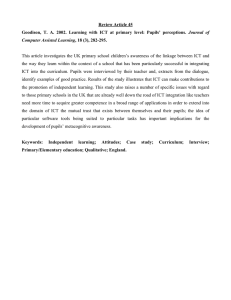
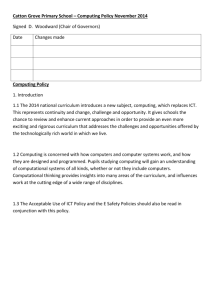


![afl_mat[1]](http://s2.studylib.net/store/data/005387843_1-8371eaaba182de7da429cb4369cd28fc-300x300.png)
